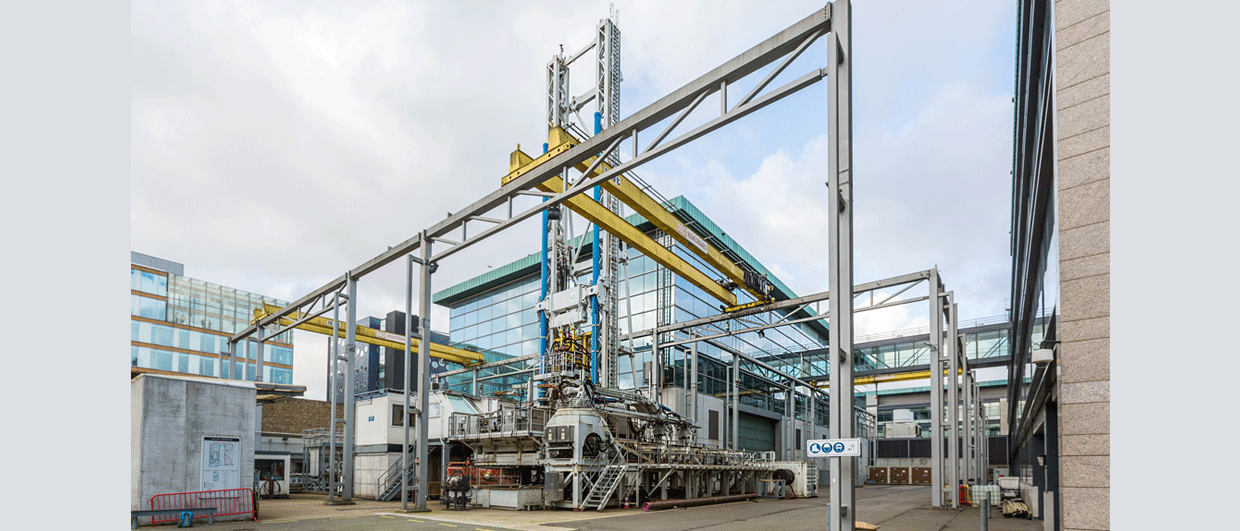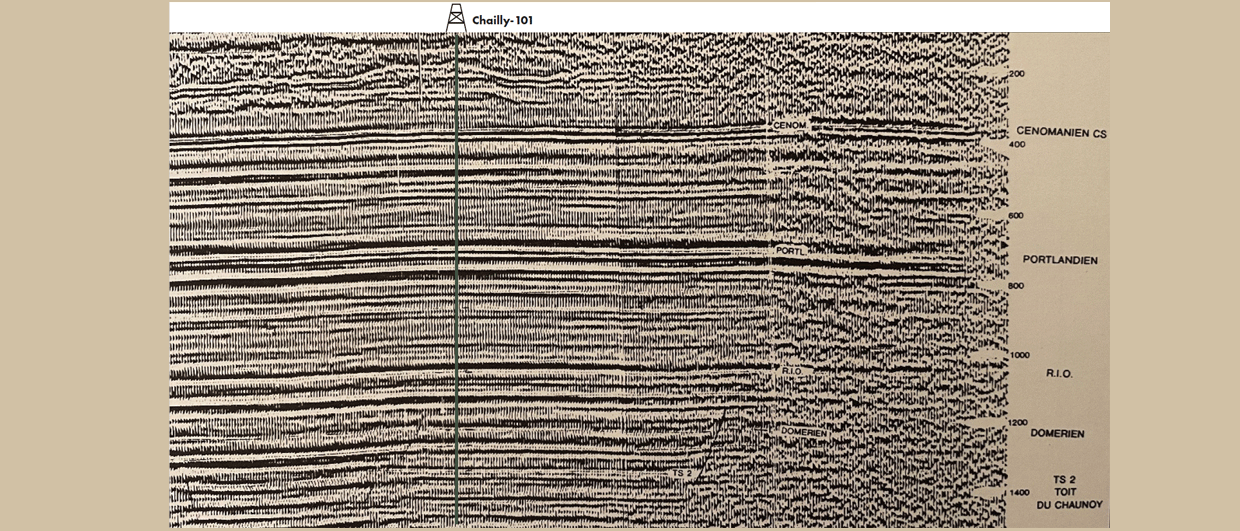More than fifteen years ago, Delft University of Technology (TU Delft) was one of the first institutions in the Netherlands to come up with the idea to warm their premises and surrounding residential areas using geothermal energy. It took quite a few years before the producer and injector wells were ultimately drilled, mostly because of the skewed heat demand throughout the year and the complicated business model that comes with this, but the wells were finally drilled in the second half of 2023.
So, in July last year, the time had come for the drill bit to hit the ground, aiming for the Lower Cretaceous Delft Sandstone at a depth of around 2.2 km and temperatures close to 80 degrees Celsius. The project is owned by a consortium of companies including Shell and has a large scientific component led by Delft University of Technology. The scientific aspects include a coring program, a logging program, and the installation of monitoring facilities in the wells and in boreholes around the doublet.
The first well, which will be the producer, was successfully completed in September 2023. The second well, the future injector, took a little longer. This was caused by borehole stability issues, thought to be due to an unstable section in the overlying Vlieland Claystone Formation.

A common issue
The Vlieland Claystone Formation is not new to borehole stability issues, and drillers have therefore always argued to case off the formation as quickly as possible. Even though a drilling mud was used that did not interact with the mudstones, an increasing amount of cavings were observed whilst drilling. Mud losses then occurred, indicating further wellbore stability issues, after which the drill string also became stuck. This led to the decision to abandon the hole and drill a sidetrack above the troubled zone.
Drilling a side-track, even two, is not uncommon. What is more of an issue is the fact that the sealing unit above the Delft Sandstone reservoir was penetrated during the first drilling attempt, without the ability to abandon the hole properly due to the drill string being stuck higher up in the section. This can subsequently lead to flow of brines from the Delft Sandstone to reservoirs in the overburden, which is an unwanted situation with regards to the presence of aquifers.
The Dutch authorities have therefore recently stipulated that any penetration of the sealing unit of a geothermal reservoir should be plugged to prevent cross-flow in the subsurface, especially because injection of water in the reservoir will locally lead to an increase in pressure. The sealing formation needs to be able to sustain this local pressure rise as induced fracking of the seal may take place otherwise. An open-hole penetration of the seal, as is the case now, may lead to pressure being dissipated in that direction.
What do the various parties say?
In a document released by the Ministery of Economic Affairs and Climate, various institutions and the Delft geothermal project consortium (GTD) itself assess the risk for cross-flow to the overburden.
GTD writes that the sealing Rodenrijs Member shows ductile behaviour, meaning that, over time, the hole may close itself. In addition, the well bore is filled with drilling fluid, which will also block flow through the caprock. On that basis, the consortium concludes that the risk of flow through the entire Rodenrijs Member is very unlikely.
TNO – Geological Survey of the Netherlands – takes a more conservative stance and writes that cross-flow to the Rijswijk Sandstone Member cannot be excluded. However, based on a modelling exercise, the institute does conclude that the amount of cross-flow is likely to be limited and will not impact freshwater aquifers in the shallow overburden.
State Supervision of the Mines is even more critical about the project as they claim that GTD’s reasoning as to why the risk of cross-flow is negligible is not supported by literature references, modelling work or a quantitative approach. Their recommendation therefore includes performing a dynamic modelling study and a well test to back up the claims made.
Following recommendations of another three governmental bodies, the minister ultimately granted the consortium a permit to start production of geothermal energy from the project, whilst stipulating that a well test and the dynamic modelling work are to be carried out to monitor and better understand the risk of cross-flow.
No complete stop
The above clearly shows how the authorities emphasize the importance of seal integrity when it comes to geothermal energy production. That is also why it is now mandatory to plug a well at the sealing unit in case of abandonment. The fact that the Delft project ended up with an unplugged well is unfortunate, but at the same time, it is good to see that a flagship project of that kind is not stopped because it has not met one of the design criteria. Instead, it seems that reason has prevailed with a workable solution in place.





